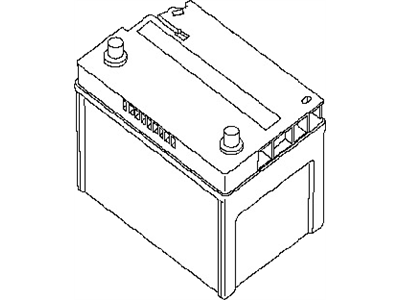×
- Hello
- Login or Register
- Quick Links
- Live Chat
- Track Order
- Parts Availability
- RMA
- Help Center
- Contact Us
- Shop for
- Nissan Parts
- Nissan Accessories

My Garage
My Account
Cart
Genuine Nissan Titan Car Batteries
Auto Battery- Select Vehicle by Model
- Select Vehicle by VIN
Select Vehicle by Model
orMake
Model
Year
Select Vehicle by VIN
For the most accurate results, select vehicle by your VIN (Vehicle Identification Number).
5 Car Batteries found

Nissan Titan Battery-Key
Part Number: B8599-C2032$7.84 MSRP: $12.07You Save: $4.23 (36%)Ships in 1 Business Day
Nissan Titan Car Batteries
If you need any OEM Nissan Titan Car Batteries, feel free to choose them out of our huge selection of genuine Nissan Titan Car Batteries. All our parts are offered at unbeatable prices and are supported by the manufacturer's warranty. In addition, we offer quick shipping to have your parts delivered to your door step in a matter of days.
Nissan Titan Car Batteries Parts Questions & Experts Answers
- Q: What are some tips for proper battery maintenance on Nissan Titan?A:Making sure your vehicle starts reliably requires taking good care of the battery. You should have all required tools and equipment before you start any work. There are a few precautions to take when working with batteries such as switching off the engine and disconnecting the negative terminal. Avoid producing sparks or flames or charging the battery in an area with poor ventilation since batteries generate highly flammable, explosive gas which is hydrogen. As such, its electrolyte contains corrosive sulfuric acid; you should not let it come into contact with your eyes, skin, clothes, etc. You must also wear protection gear before any battery maintenance exercise. This can involve inspecting the battery for external damages like corroded connections, loose clamps or cable problems. If there is corrosion present on it, then it must be removed for cleaning. In order to clean them, use a solution made of baking soda and water with a brush that cleans battery ends as well as terminals while wearing goggles and gloves for safety reasons. The tray and hold-down clamp where the battery is located should not be damaged and should be tight enough to secure it while driving. It is better to remove the battery from the car during charging so that escape gas does not damage its paintwork; therefore it is preferable to charge elsewhere this way that will prevent paint damage by escaping gasses. One would restore power to a discharged cell or keep it from discharging further by using a slow-rate charge through 1-2 amp chargers only. Quick charging is meant for emergency purposes only though charges vary depending on gravity measurements since observing overheating here is important. Sealed ones can contain hydrometers built inside them while others can be checked using digital voltmeter.
Related Nissan Titan Parts
Browse by Year
2024 Car Batteries 2023 Car Batteries 2022 Car Batteries 2021 Car Batteries 2020 Car Batteries 2019 Car Batteries 2018 Car Batteries 2017 Car Batteries 2016 Car Batteries 2015 Car Batteries 2014 Car Batteries 2013 Car Batteries 2012 Car Batteries 2011 Car Batteries 2007 Car Batteries 2006 Car Batteries 2005 Car Batteries 2004 Car Batteries






